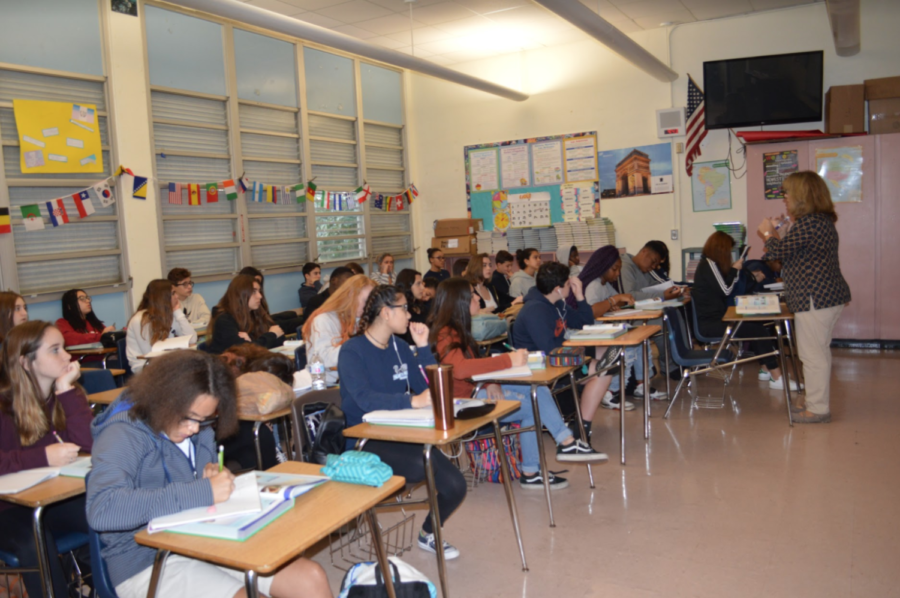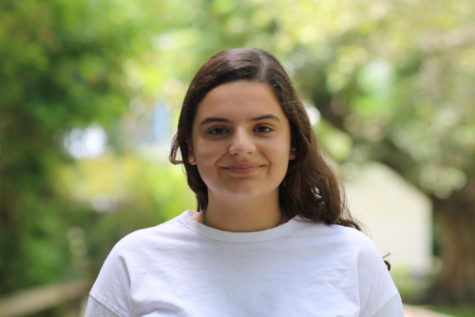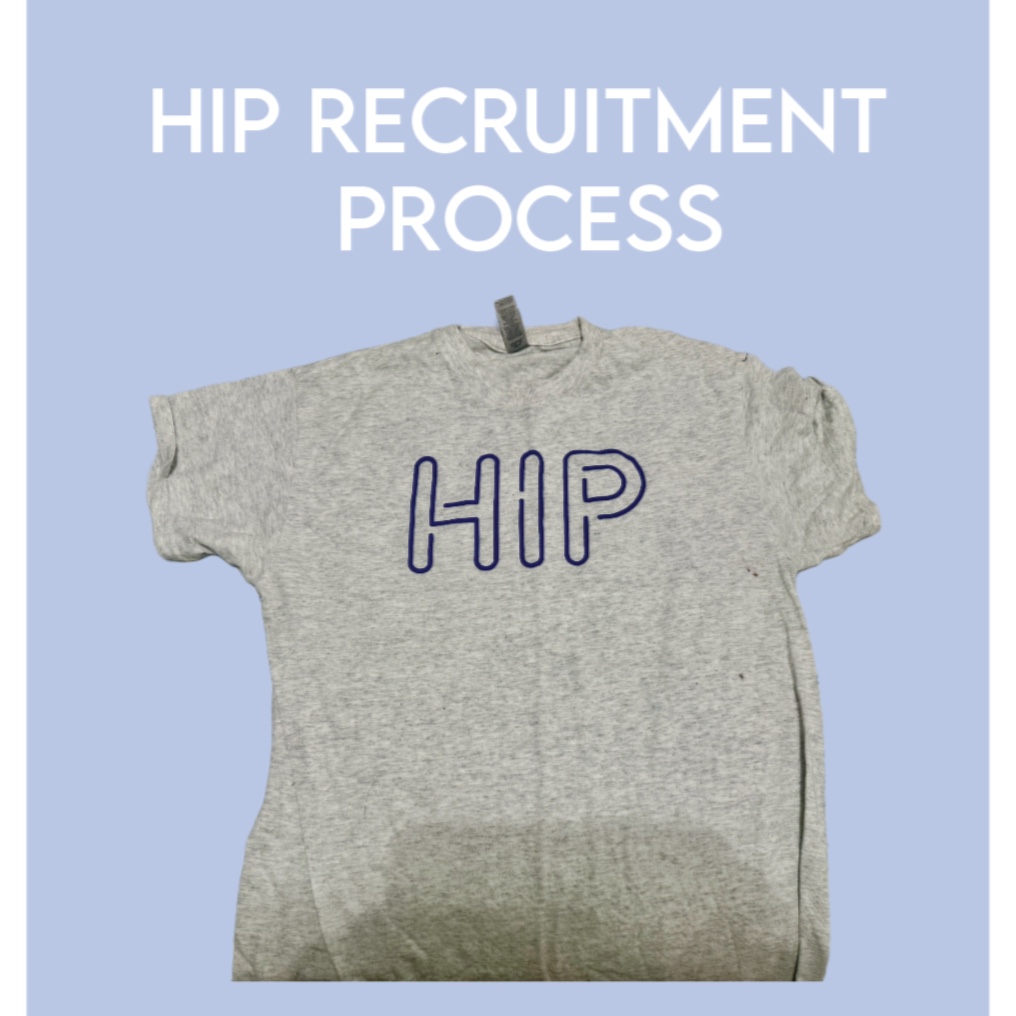The Detriments of a Crowded Classroom
January 21, 2018
In order to keep herself from burning out, French and Spanish teacher Sonia Nuñez takes a yoga class once a week.
The yoga takes Nuñez’s mind off of the 200+ students she teaches at Miami Palmetto Senior High. She also often has students in different levels in each of her classes, a common situation for language teachers. That means as many as three different levels within the same class, a limited supply of textbooks and a limited amount of time to give to each student. Planning for her six different periods can take hours, and since Nuñez has no planning period, the work often goes home with her.
“I literally spend the entire night working for school,” Nuñez said. “So from 2:20, two and half hours in the school and then 5 extra hours of my time [after I get home]. On the weekend, the whole day Saturday, all night Friday, half of Sunday doing school work.”
It’s a problem that seems common, as much as 30-40 percent of all individual classes at Miami Palmetto Senior High are above the 2002 Florida Constitutional Amendment class size limit, 25 kids per classroom. Class sizes per teacher are calculated using teacher averages, which means that a teacher could have 20 students in one class and 35 in another, but as long as each core teacher has a teacher-student average of 1:25, the class is within the perimeters of the law.
The class size reduction legislation only covers core classes such as english, history, math and science, however, classrooms with a large number of students prove a challenge to navigate for both the teacher and the students.
Advanced Placement psychology teacher Gwendolyn Schoolar’s classes range within the high twenties to mid-thirties, because of her class’s popularity, she’s never much known a small classroom.
“I’m sure some kids get lost in the mix. With the large numbers you do focus on the kids who are struggling, and you focus on the kids who excel; they’re the ones who tend to get your attention,” Schoolar said. “I think there probably are some kids in the middle who get a little bit lost. Or not lost, they just don’t get the same attention.”
According to the Seattle-Post Intelligencer, having a large number of students in a classroom can hinder education, contribute to the wear and tear on schools and lead to higher rates of teacher burnout.
“I know a lot of teachers with the same number of students that I have, and they have had fights in the class and kids have thrown trash cans at other kids in the class and hit the teacher. It has been chaos,” Nuñez said. “If I didn’t have the experience that I do from my years of teaching, I don’t think I could have survived the situation, to be honest because it’s very, very hard.”
According to a study by WalletHub, Florida ranks fifth from the bottom of the worst states to be a teacher after factoring in salaries, pensions, turnover rates and public school spending. While Superintendent Alberto Carvalho brings home $345K a year, a teacher’s salary is dictated by the 2011 teacher merit pay law in which pay depends on students’ test scores, leaving some to earn only 40K for working 7 hours or more a day, according to the Miami Herald.
Although Miami Palmetto Senior High currently operates at below its maximum enrollment rate at 98 percent capacity, the school may not be properly funded for the students it has already.
“I only have 11 books, and 25 students that need the books in one of my classes. [The school] is very much under-resourced, and you know at the administration level there’s not much they can do, I think this is a district problem,” Nuñez said. “They don’t have the resources or the money to hire more teachers to help out, so the school has to accommodate whatever they have, but who suffers?”
According to the Florida Department of Education, the number of students in the state was expected to increase by 300,000 for the 2017-2018 school year. Along with the increasing number of students comes the increasing amount of dollars in the budget every year. The budget only increased from $7,196 per student to $7,221 per student, a five dollar increase. This means that as the amount of students and their needs increase, allocations are spread thinner.
“There may be a law that says core classes should be at 25 to 1 in a high school, but what do they actually get funded for,” Principal Victoria Dobbs said. “The schools are not funded for the size that the law suggests. They are way underfunded.”
According to the Center for Public Education, a 1978 study found that when classroom sizes dip below 20 students, benefits start to show. According to the Miami Herald, a 2014 study also linked small classrooms to more positive life outcomes for students. The students were found to engage in less criminal behavior, have lower rates of teenage pregnancy, higher graduation rates along with higher college admission rates.
“A lot more students, from a counseling perspective, [means] less quality time to spend with individual students,” Student Services Department Chair Amanda Pinero-Trombly said. “From just a school population perspective, higher probability of incidences of whether it’s crime or fighting, or things that shouldn’t be happening in a school.”
Another study from the American Journal of Public Health concluded that reduced class sizes saved money on health insurance later, and added an additional two years of life. For minority students the benefits of smaller class sizes shows exponentially, according to the Atlantic. Reduced sizes close the academic gap between students of different backgrounds. A Princeton researcher found that in a small class, test scores for black students increased more than test scores for white students.
“The only small class that I have are my [level two Spanish] classes that are smaller than my French classes, and we can do so much more,” Nuñez said. “We get through activities faster, the kids can concentrate more, I can really be on top of everybody to make sure everyone is on task because you only have a few kids to work with. It’s so much more enjoyable.”
Large classes also contribute higher rates of student absenteeism.
“What contributes to the high rates of absenteeism, that is something that baffles me a little bit,” Schoolar said. “I think a lot of kids probably think it’s easier to skip in a big class because the teacher doesn’t have time to follow up on it, or the teacher won’t notice because the teacher is so busy so the teacher isn’t going to take the time to track them down.”
Despite the obstacles that come with keeping track of hundreds of students, schools with large populations find difficulty in keeping the school clean, funded and an environment dedicated to learning. The relationship between full classes and effective teaching shows that the smaller the class is, the more individualized the instruction and the more successful some students can become.
“In all honesty, I really do try to look at every student and try to understand and discover what’s special about each kid even when I have a lot of kids in my classroom,” Schoolar said. “I’m hoping every student feels that I see them, that they’re important to me, and that their learning matters to me.”










